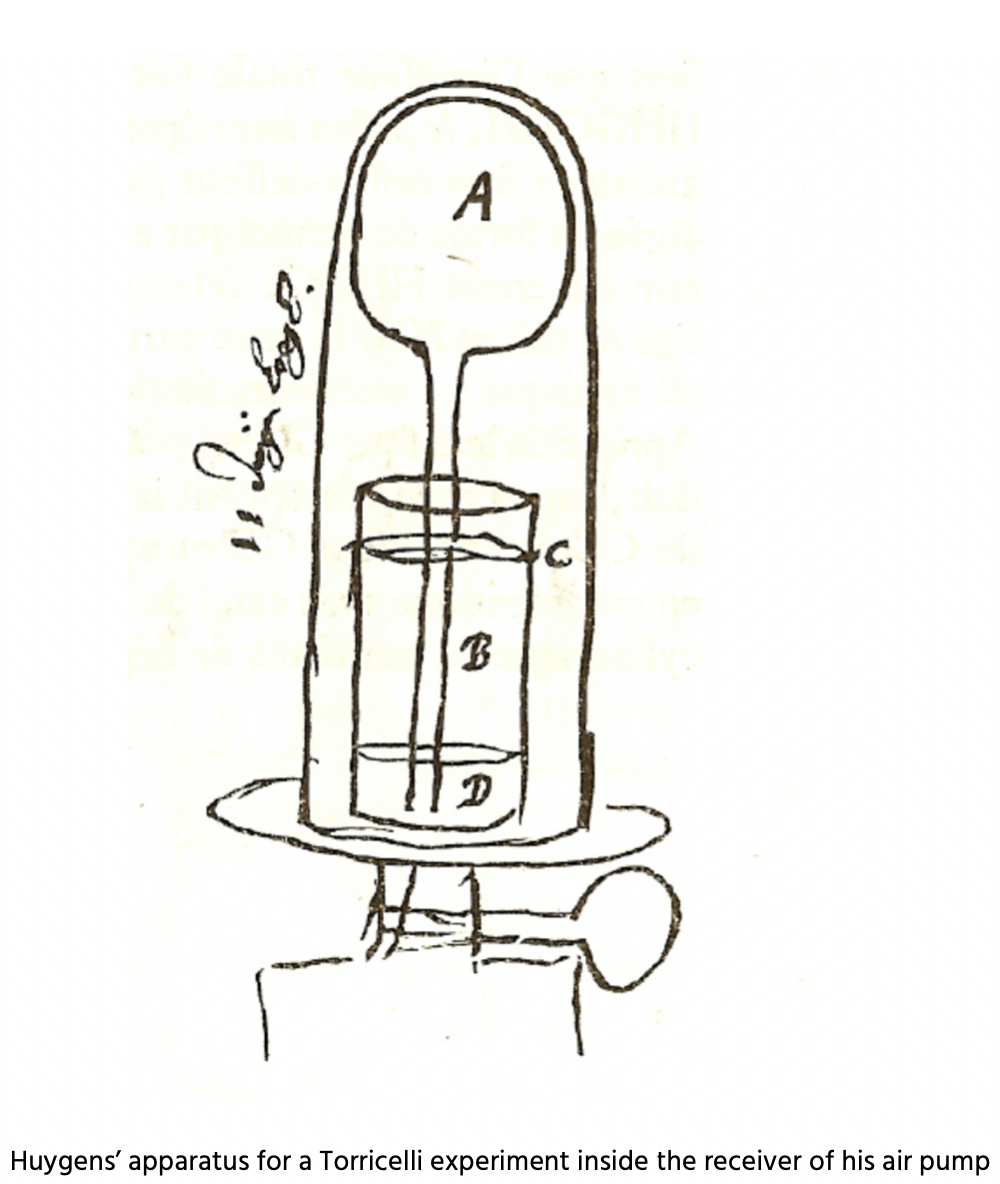5. THE VOID IN THE VOID
The void in the void is an experiment carried out by Huygens, as a replication of one of Boyle’s New Experiments. It has its roots in an experiment called ‘the Torricellian vacuum’, first performed in 1643 by the Italian Evangelista Torricelli. A long glass tube is filled with mercury and, with a finger placed on the open end, inverted in a container also filled with a layer of mercury. When the finger is removed, some of the mercury in the tube is released in the container, but the column of mercury still rises above the mercury into the container.
According to Torricelli, the column of mercury was sustained by the pressure of the air surrounding it. Moreover, the empty space left at the top of the glass tube, called ‘the Torricellian void’, was proof of the possibility of a vacuum. According to the plenists, however, this empty space was filled with a ‘subtle fluid’ and it was actually this fluid that was responsible for suspending the mercury column in the tube. The Torricellian void became an important controversy in the heated debate between plenists and vacuists.
In 1660 Boyle took the Torricellian apparatus into the receiver of his air-pump. If he could show that the column of mercury would subside further when the air surrounding it was evacuated, he would have proved that the vacuists were right. And indeed, he observed that, when the receiver was emptied, the mercury (or water, which was also used) in the inverted tube or flask subsided to the level of the fluid in the glass. It seemed that the vacuists had won a battle. More importantly, this was a big victory for the experimental program: a simple experimentally produced fact could decide a debate without having to appeal to speculative theoretical entities such as ‘abhorrence of a void’ or ‘subtle matter’.
But then, in 1661, Huygens replicated Boyle’s void-in-the-void experiment. He described how after five to six times of pumping, a bell of air formed at the top of the flask and the water started to fall down. (As you can see, it takes us much longer.) But, when he filled the receiver with air again, he noticed something unexpected, something that Boyle had not observed. Huygens saw how, just like we can see here, the water in the flask rises up again, but a small bubble of air is left at the top of the flask: “Als ick daer nae weder lucht in liet, liep de fles A weer tot boven toe vol water, uytgesondert een klein blaesje van lucht, wat grooter als een hennipsaet; doch weet niet of dit oprechte lucht was. [If I then let the air in again, the flask A filled with water to the top, except for a small bubble of air, a bit larger than a hemp seed, but I don’t know whether this is true air.]”
Note this last sentence in particular: Whether this is true air. It seems that the facts didn’t speak for themselves and speculations were seeping in.

